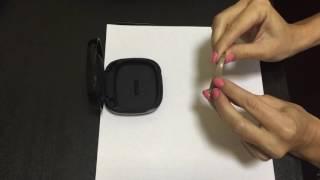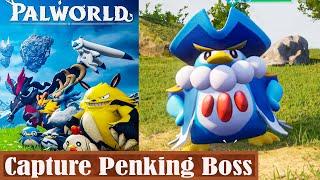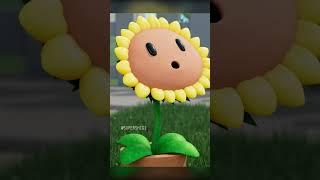![Смотреть Great Reed Warbler [Acrocephalus Arundinaceus] Great Reed Warbler [Acrocephalus Arundinaceus]](https://ruvideo.cc/img/full/MGNWVFJWWVdHUkI.jpg)
Great Reed Warbler [Acrocephalus Arundinaceus]
In this video, we learn about the great reed warbler.
QUICK FACTS:
• Lifespan: 2-3 years
• Length: 6 – 8 in
• Wingspan: 9.8 to 11.8 in
• Weight: 0.78 to 1.34 oz
• Family: Acrocephalidae
Description
At nearly nine inches in length, the great reed warbler is one of the largest Old World Warblers. It is similar in appearance to the Eurasian reed warbler. It is brown above with buff-white underparts. It has dark eyes, a pale supercilium, a large head with a flat forehead, and a blackish-gray, pointed bill. Sexes are alike, and juveniles are browner below.
Vocalizations: Call and song
The common call of the great reed warbler is a high-pitched krrrr. The song is short but loud and far-carrying with chattery and whistling notes. Males use long longs to attract females and shorter songs to mark their territory.
Distribution and range
Great reed warblers breed in Europe and Western Palearctic parts of Asia. During winter, they migrate to tropical Africa, where they remain until late in the season.
Habitat
As the name suggests, they inhabit large reed beds and can be found in ponds, canals, lowland rivers, and other reed habitats (Mérő et al, 2015).
Diet and feeding habits
Great reed warblers mainly feed on insects and other invertebrates but may also take small vertebrates such as small fish and amphibians. During winter, they may also eat fruit.
Nesting and breeding
Great reed warblers have a polygynous mating system, but some pairs may exhibit monogamous behavior. Males sing to attract females. The nest is a cup shape and well-concealed in the reeds. Females lay up to six eggs.
Behavior
They are territorial during the breeding season but may form large flocks during winter and defend the reed beds from other birds.
Status and conservation
Populations on great reed warblers have shown great fluctuation. They are relatively adaptable and widespread with an expanding range. Great reed warblers are classified as least concern by the IUCN.
#avibirds #bird #birdwatching #greatreedwarbler #acrocephalusarundinaceus
QUICK FACTS:
• Lifespan: 2-3 years
• Length: 6 – 8 in
• Wingspan: 9.8 to 11.8 in
• Weight: 0.78 to 1.34 oz
• Family: Acrocephalidae
Description
At nearly nine inches in length, the great reed warbler is one of the largest Old World Warblers. It is similar in appearance to the Eurasian reed warbler. It is brown above with buff-white underparts. It has dark eyes, a pale supercilium, a large head with a flat forehead, and a blackish-gray, pointed bill. Sexes are alike, and juveniles are browner below.
Vocalizations: Call and song
The common call of the great reed warbler is a high-pitched krrrr. The song is short but loud and far-carrying with chattery and whistling notes. Males use long longs to attract females and shorter songs to mark their territory.
Distribution and range
Great reed warblers breed in Europe and Western Palearctic parts of Asia. During winter, they migrate to tropical Africa, where they remain until late in the season.
Habitat
As the name suggests, they inhabit large reed beds and can be found in ponds, canals, lowland rivers, and other reed habitats (Mérő et al, 2015).
Diet and feeding habits
Great reed warblers mainly feed on insects and other invertebrates but may also take small vertebrates such as small fish and amphibians. During winter, they may also eat fruit.
Nesting and breeding
Great reed warblers have a polygynous mating system, but some pairs may exhibit monogamous behavior. Males sing to attract females. The nest is a cup shape and well-concealed in the reeds. Females lay up to six eggs.
Behavior
They are territorial during the breeding season but may form large flocks during winter and defend the reed beds from other birds.
Status and conservation
Populations on great reed warblers have shown great fluctuation. They are relatively adaptable and widespread with an expanding range. Great reed warblers are classified as least concern by the IUCN.
#avibirds #bird #birdwatching #greatreedwarbler #acrocephalusarundinaceus
Тэги:
#great_reed_warbler #acrocephalus_arundinaceus #great_reed_warbler_bird #great_reed_warbler_101 #great_reed_warbler_facts #great_reed_warbler_documentary #great_reed_warbler_information #great_reed_warbler_character #great_reed_warbler_characteristics #great_reed_warbler_size #great_reed_warbler_bird_video #where_do_great_reed_warbler_nest #what_do_great_reed_warbler_eat #where_do_great_reed_warbler_live #do_great_reed_warbler_migrate #great_reed_warbler_bird_traits #passerinesКомментарии:
Mustard In Brownie Prank #shorts #viral #pranks
Dennis Gang
28 декабря 2021 г.
Надежда Маркина
Palworld Capture Penking Boss
Gaming Tornedo
Zastava Commercial
natalinnux
6 Animes pra NÃO VER NA FRENTE DOS PAIS! Bunka Pop
Lost Media Savior [BR]
ТЕСЛА ГОВНО - и вот почему!
Дима Гордей
אחריות ישראל על העולם | הרב שמואל אליהו | קול צופייך לפרשת מטות מסעי תשפ"ד
לשכת הרב שמואל אליהו
Замена моторчика печки (вентилятора отопителя) ВАЗ 2110, 2111 и 2112
В гараже у Сандро
![Great Reed Warbler [Acrocephalus Arundinaceus] Great Reed Warbler [Acrocephalus Arundinaceus]](https://ruvideo.cc/img/upload/MGNWVFJWWVdHUkI.jpg)


![고교야구 에이스 투수의 볼 스피드 완전 놀랐습니다ㄷㄷ [군산상고 실제 피칭] 고교야구 에이스 투수의 볼 스피드 완전 놀랐습니다ㄷㄷ [군산상고 실제 피칭]](https://ruvideo.cc/img/upload/SUczU3EzTEI5bWY.jpg)






















